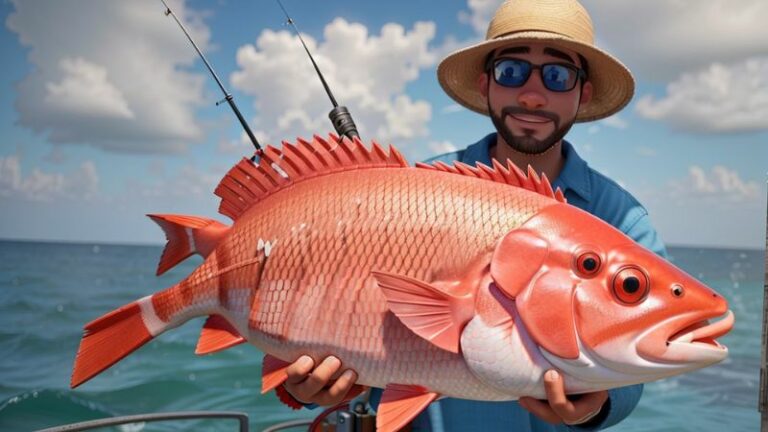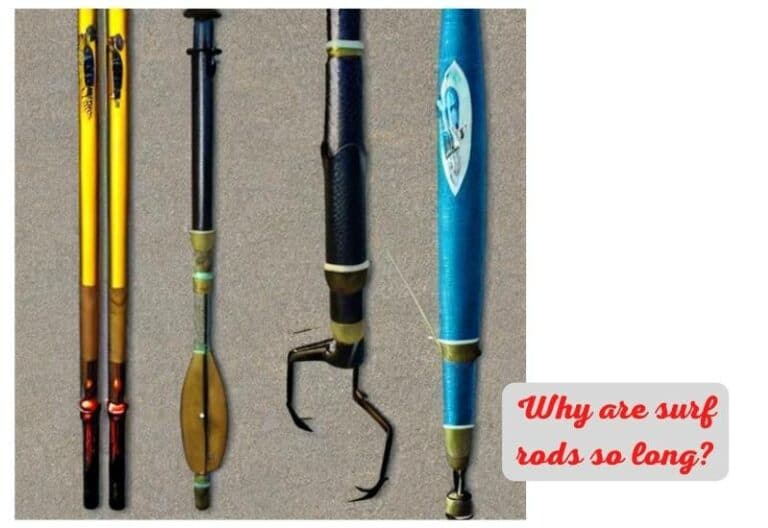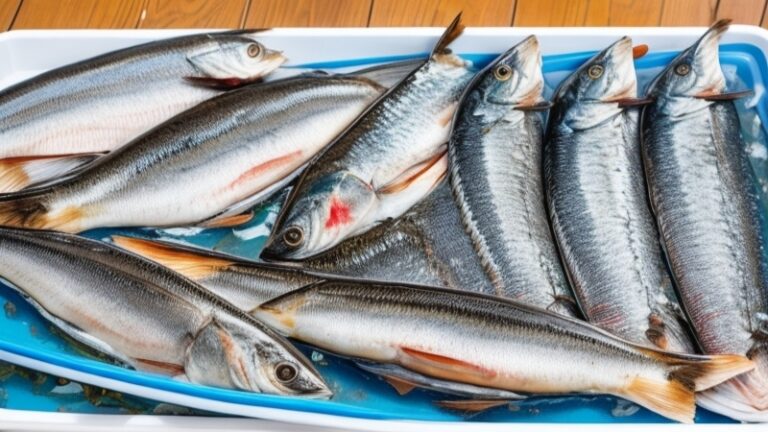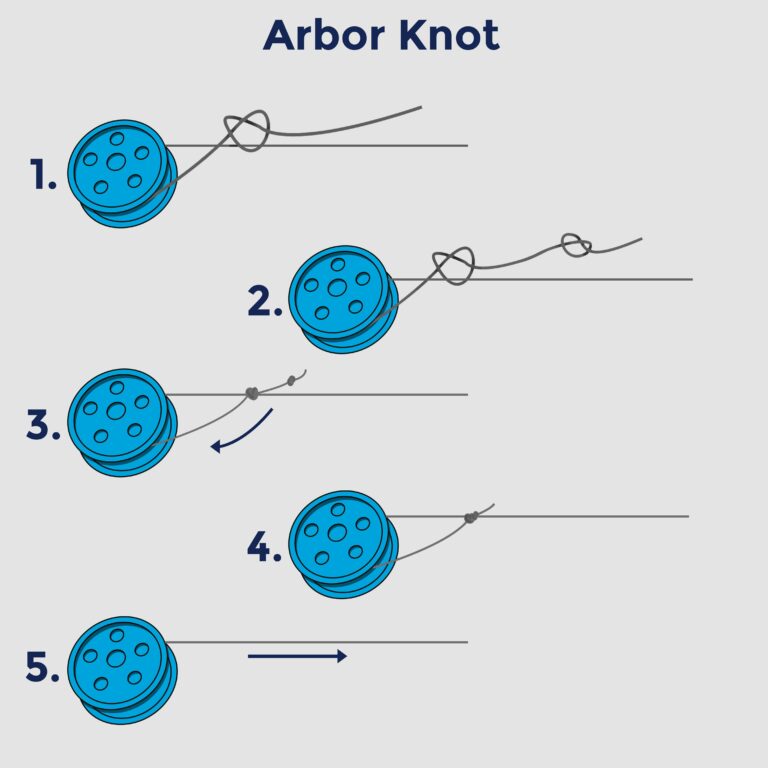How To Fish A Fluke
Today we discuss How To Fish A Fluke. Fishing a fluke is a popular technique that involves using soft plastic bait to mimic the appearance and movement of a baitfish. It’s a versatile method that can be used in both freshwater and saltwater environments. Whether you’re fishing in a lake, river, or coastal area, the fluke can attract a wide variety of fish species, including bass, trout, perch, and more.
To fish a fluke effectively, you’ll need a few key items in your tackle box: a fishing rod and reel combo, fishing line, hooks, weights, and of course, the star of the show—a fluke bait. This setup allows you to cast your line, control the depth at which the fluke swims, and entice fish to strike.
Now that you have a general understanding of what fishing a fluke is, it’s time to dive deeper into the specifics. In the following sections, we’ll guide you through each step of the process, from selecting the right gear to mastering the art of presentation. Get ready to reel in some exciting catches with the “how to fish a fluke” technique!
How to Fish a Fluke: Mastering the Technique for a Bountiful Catch
Fluke fishing, also known as summer flounder fishing, is a popular sport among anglers. These flatfish are abundant in coastal waters and offer an exciting challenge for fishermen. Whether you’re a beginner looking to try your luck or an experienced angler seeking to improve your skills, this guide will provide you with everything you need to know about fishing for fluke. From choosing the right equipment to mastering the technique, let’s dive in and learn how to reel in a fluke with finesse.
The Basics of Fluke Fishing: Equipment and Techniques
1. Selecting the Right Gear:
When it comes to fluke fishing, having the right gear is crucial. Start with a medium-weight spinning rod around 6 to 7 feet long. Pair it with a high-quality spinning reel that can handle saltwater conditions. Opt for a braided line with a test strength of 20 to 30 pounds, as it provides excellent sensitivity and allows you to feel the subtle bites of a fluke.
Choosing the Perfect Fluke Rig:
To entice fluke, a popular rig to use is the bucktail rig. This consists of a weighted jig head adorned with a bucktail skirt and a teaser hook. The weight of the jig head depends on the water depth and current strength. Experiment with different sizes to find the perfect balance. Attach a teaser hook about 12 inches above the jig head to attract fluke from a distance.
Mastering the Fluke Technique:
Successful fluke fishing requires a specific technique known as drifting. Find a productive area with a sandy or muddy bottom, and position your boat up current. Start by casting your baited rig near the boat and let it sink to the bottom. Allow the boat to drift naturally, keeping your line slack to maintain contact with the bottom. Periodically lift and drop your rod tip to create an enticing motion that imitates the movement of prey. Stay alert for any signs of a bite and reel in your catch swiftly.
2. Locating Fluke Hotspots
To increase your chances of a successful fluke fishing trip, it’s essential to find their favorite hangouts. Fluke are known to congregate in areas with a combination of sand, mud, and rocky bottoms. Look for drop-offs, beachfronts, and structures such as jetties and bridges. Flukes are also attracted to structures that create currents, such as tidal rips and channels. Use a depth finder to determine the ideal depth, typically around 20 to 60 feet, where flukes are most likely to be found.
The Importance of Tidal Currents
One of the crucial factors in fluke fishing is tidal currents. Flukes are ambush predators that wait for their prey to come to them. They position themselves near structures or in areas with strong currents, allowing them to conserve energy while waiting for food. Understanding the direction and strength of the tidal currents will help you identify the most productive spots to target fluke.
Using Technology to Your Advantage
Modern technology can greatly assist in locating fluke hotspots. Utilize GPS devices and fish finders to mark productive areas and track your drift. Take note of successful trip study charts and online resources that highlight fluke fishing spots in your region. This will enable you to plan your trips effectively and increase your chances of a rewarding catch.

Mastering Fluke Fishing Techniques: Beyond the Basics
3. Perfecting Your Bait Selection
Choosing the right bait is crucial for enticing fluke to strike. While flukes are opportunistic feeders and will bite on a wide range of offerings, some baits are more effective than others. The most popular bait for fluke fishing is squid strips. These offer a tantalizing scent and are readily available at most tackle shops. Other effective options include live minnows, sandworms, and artificial baits that mimic the appearance and movement of small fish.
Alternative Baits for the Adventurous Angler
For anglers looking to experiment, various alternative baits have proven successful in luring fluke. These include Berkley Gulp! Swimming Mullet, which comes in various colors and imitates the movements of a wounded fish, and mackerel strips, which emit a strong scent trail that can attract fluke from afar. Don’t be afraid to try different baits and see which ones produce the best results in your local waters.
Tips for Maximizing Bait Presentation
The presentation of your bait can make a significant difference in your fishing success. Avoid excessively large bait sizes, as fluke have relatively small mouths and are more likely to strike at smaller offerings. Thread your bait carefully onto the hook, ensuring a natural appearance and good hook exposure. Experiment with different retrieval speeds to find the sweet spot that triggers a fluke to strike.
4. The Art of Catching Trophy-Sized Fluke
While flukes can be found in various sizes, many anglers aim to catch trophy-sized individuals. These larger flukes are often female and can exceed 10 pounds. Targeting trophy fluke requires a combination of skill, patience, and a willingness to adapt your approach.
Refining Your Technique:
When targeting trophy fluke, it’s important to adjust your technique accordingly. These larger fish tend to be more cautious and selective in their feeding. Use lighter leader material, around 15 to 20 pounds, to increase the chances of getting a strike. Slow down your drift, allowing your bait to stay in the strike zone longer. Experiment with different jigging motions and retrieve speeds to find the method that triggers the interest of these elusive giants.
Timing Is Everything:
Targeting trophy flukes often requires patience and time on the water. Larger flukes tend to be more active during specific times, such as during the early morning or late evening when they are more likely to feed actively. Plan your trips around these peak periods to increase your chances of hooking a trophy-sized catch.
Persistence Pays Off:
Catching trophy flukes requires persistence and determination. Don’t be discouraged by slow periods or unsuccessful trips. Keep refining your technique, studying the behavior of flukes in your area, and learning from each experience. The commitment will pay off when you finally land that prized trophy fluke.
Mastering the Art of Fluke Fishing: A Rewarding Pursuit
5. The Benefits of Fluke Fishing:
Fluke fishing offers numerous benefits for anglers of all skill levels. Firstly, the pursuit of fluke provides a thrilling challenge and keeps anglers engaged as they strive to improve their techniques. Besides, flukes are abundant and offer a high likelihood of success, making it an ideal pursuit for beginners and seasoned anglers alike. The beautiful coastal scenery and the opportunity to spend time on the water further enhance the allure of fluke fishing.
6. Tips for a Successful Fluke Fishing Trip:
To ensure a successful fluke fishing trip, keep these tips in mind. Firstly, research and plan your trip ahead of time, taking into account local regulations, tackle requirements, and potential hotspots. Prepare your gear in advance, checking for any damage or wear and tear. Pack essential items such as sunscreen, snacks, and plenty of water to stay hydrated. Finally, stay informed about the local weather conditions and fishing reports to make the most of your time on the water.
7. The Importance of Catch-and-Release:
As responsible anglers, it’s crucial to practice catch-and-release to preserve the fluke population and ensure sustainable fishing for future generations. Handle flukes carefully, avoiding excessive stress or injury, and quickly return them to the water. Follow local regulations regarding size limits and bag limits to contribute to the conservation efforts of fluke populations.
In conclusion, fishing for fluke is an exciting and rewarding pursuit. By equipping yourself with the right gear, mastering drifting techniques, locating fluke hotspots, and refining your bait selection, you’ll increase your chances of a bountiful catch. Remember to be patient, persistent, and responsible in your pursuit of fluke, always prioritizing conservation and sustainable fishing practices. Get out there and reel in the summer flounder of your dreams!
Key Takeaways: How To Fish A Fluke
- Fishing a fluke requires the right equipment, including a fishing rod, reel, and fluke bait.
- Choosing the right location is crucial for fluke fishing, as they are typically found near the seabed.
- Casting your line near structures like rocks or wrecks can increase your chances of catching a fluke.
- When fishing for fluke, it’s important to keep your bait close to the bottom and move it slowly to attract their attention.
- Be patient and observant while fluke fishing, as they are known to be cautious and may require a subtle approach.
faqs for How To Fish A Fluke:
Rigging a fluke can vary depending on the fishing conditions, but a popular and effective method is using a sliding sinker rig. Start by threading a barrel swivel onto your main line, then attach a leader line to the other end of the swivel. Tie a loop at the leader’s end and attach a hook. Finally, slide a pinch-on sinker onto the main line above the swivel. This rig allows the fluke to move freely, mimicking a natural baitfish.
Fluke, also known as summer flounder, can be found in a variety of locations, but they are typically found in shallow waters such as bays, estuaries, and nearshore areas. Look for areas with sandy or muddy bottoms where fluke likes to hide and ambush their prey. Structures like jetties, docks, and drop-offs are also popular spots to find fluke.
Pay attention to tidal movements as flukes commonly feed during incoming or outgoing tides. They often position themselves near current breaks, where they can easily catch forage fish being carried by the tide.
Fluke fishing is best during the warm summer months when water temperatures are higher. They become more active during this time and feed more aggressively. Early morning and late afternoon tend to be prime times for fluke fishing, as the water is usually calmer and the sun is not as high in the sky.
Keep in mind that flukes are also influenced by tidal movements. Many anglers have success during the incoming and outgoing tides as the current stirs up prey items and brings them within reach of the flounder. Experiment with different times of the day and tide cycles to figure out when the fluke is most active in your area.
Fluke are opportunistic feeders and will readily take a variety of bait. Some popular options include live bait such as killifish, sand eels, and squid. Cut bait like strips of squid or strips of fish can also be effective. Many anglers also have success using artificial baits like bucktail jigs, soft plastic swimbaits, and fluke rigs with teaser hooks.
It’s worth noting that fluke can be selective at times, so it’s a good idea to bring a variety of bait options to see what they’re most interested in on a given day. Don’t be afraid to experiment and switch things up if you’re not getting bites.
One effective technique for fishing a fluke is to cast or drift your bait along the bottom. Flukes are often found near the seabed, so it’s important to keep your bait close to the bottom. Use a slow and steady retrieve, occasionally pausing to let the bait flutter and mimic the movements of a wounded baitfish.
Another technique is to jig your bait off the bottom. This involves lifting your rod tip, and then lowering it to allow the bait to sink back down. Repeat this motion in a rhythmic manner to create an enticing action that can attract nearby fluke. Remember to stay alert for any bites or subtle tugs, as flukes can be quite subtle in their strikes.
How To Fish A Fluke – An Easy Guide To Catching Bass
Summary
Fishing for fluke can be a fun and rewarding experience. Remember these key points:
First, choose the right tackle and bait. A medium to light fishing rod with a spinning reel works well, and using a bucktail or squid as bait is effective.
Next, cast your line and let it sink to the bottom. Then, gently jig the rod to mimic the movement of a fluke.
Pay attention to your line for any signs of a bite, like a tap or a sudden tug. When you feel a bite, reel in slowly to hook the fluke.
Finally, be patient and keep practicing. Fishing takes time to master, so don’t get discouraged if you don’t catch a fluke right away.
Remember to have fun and enjoy the process of learning how to fish a fluke!



